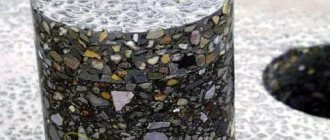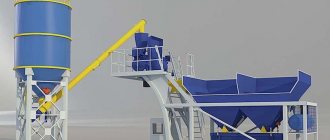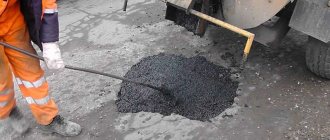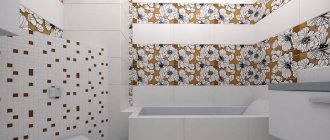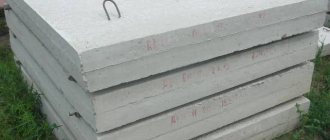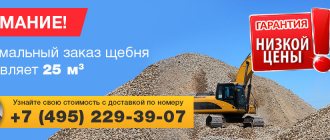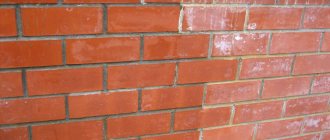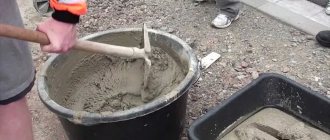Cement-concrete coatings are welcome! (Part 1)
Part 1 Part 2
Discussions about the construction of roads with cement concrete pavement (CPC) have been going on in our country for decades, but for a number of reasons, the analysis of which is not the topic of this article, we still do not have widespread construction of such highways. In the proposed material, we will once again introduce the reader to the advantages of pavements and road structures made of cement concrete, give examples from foreign and Russian practice, and also talk about the equipment that is used to work with cement concrete.
We will talk about road concrete pavers with relatively high productivity, intended for the construction and repair of road, airfield and other surfaces.
We do not consider equipment for installing cement concrete floors in industrial and warehouse premises, since this specific equipment is not the topic of our article. We also leave out stationary concrete pavers for industrial enterprises.
Concrete pavers are such specific equipment that there are not many manufacturing companies on the world market compared to the number of manufacturers of other types of road construction equipment. Even the world's leading manufacturers, which produce almost complete lines of road construction machines, do not undertake the production of concrete pavers.
The only exception to this “rule” is the TEREX , which offers a number of high-tech concrete pavers. Maud. TEREX SF-2204 with a 240 hp engine and a transport weight of up to 24 tons is designed for work in the municipal sector. The machine has a tubular frame with double hydraulic telescoping and four tracks. Three steering modes are standard: normal, crab and sequential steering of the front and rear tracks. The control system has sensors for longitudinal and transverse slope. The width of the laid strip can be changed by simply switching the regulator from 2.7 to 4.57 m (optional - up to 6.1 m). The double laying molds of the concrete pavers, together with the side molds made on the guillotine principle and installed on a telescopic chassis, make it possible to produce the road surface immediately along with the curbs. There is also a mod. TEREX Bid-Well 5000 and 6500 for laying cement concrete runways at airports, as well as pulp and paper on highways, they arrange coverings of flat, parabolic inclined and conical profiles. For both models, the laying width ranges from 3.66 to 20.73 m and the thickness of the laid cement concrete layer is up to 760 mm.
Advantages and disadvantages of cement concrete pavements
The main (but not the only!) advantage of the pulp and paper industry is its high durability, simply fantastic in comparison with those asphalt roads, so to speak, which are now very expensive to build throughout Russia: the design service life of the pulp and paper industry reaches 40–50 years - significantly longer than any other, no less than 3 times the life cycle of our favorite asphalt roads. In the USA, where there are perhaps the most concrete roads in the world, cement concrete roads were initially designed (calculated) for a service life of 20 years. However, the number of vehicles that drove along cement concrete roads during this time exceeded the calculated values set during the design by 20 times, since traffic intensity increased significantly, which the developers of road projects could not imagine 20 years ago. In Russia, cement concrete roads are known, built more than 40 years ago: they still do not have tracks, and the roads still perform their functions.
In part, the longevity of pulp and paper can be explained by the fact that it has low porosity and much less water gets into the material compared to asphalt concrete; accordingly, the destructive effect of water is significantly less.
Pulp and paper have different surface characteristics than asphalt pavement: a higher coefficient of adhesion with car wheels, which does not change when wet, i.e., higher resistance to sliding and skidding of the vehicle, which increases traffic safety, and pulp and paper also provide fuel economy up to 6% for trucks. In summer, asphalt concrete heats up, becomes plastic, and bitumen stains may even form on the surface. If a wheel hits such a spot, the car may skid. This does not happen with pulp and paper.
The cost of constructing cement concrete pavements is up to 20% more expensive than asphalt concrete pavements. But the costs of maintaining a pulp and paper plant during its service life are negligible, and in some cases close to zero. Coating wear can be very small (0.1–0.2 mm/year). If you compare the cost of actually repairing asphalt and concrete pavements, asphalt pavements are cheaper to repair. However, in the long term, due to the fact that repairs of pulp and paper are carried out much less frequently than asphalt pavements (hence, the road is not taken out of full operation!), the total repair costs for concrete pavements will definitely be 40–50% lower. In addition, repair work at the pulp and paper mill can be carried out under unfavorable weather conditions.
Let’s also not forget that cement concrete is also used to construct monolithic curbs, dividing and enclosing the roadway. According to Russian experience: a concrete paver and a team of 7–8 people make it possible to lay monolithic cement concrete curb stones in a volume of 300–350 linear meters per shift. And in emergency mode it was possible to achieve a productivity of 850–900 linear meters. m per shift, which cannot be achieved by laying a prefabricated structure from individual side stones.
Let's add greater environmental friendliness to the portfolio of useful qualities of pulp and paper products.
One of the two most famous concrete pavers manufacturing companies in our country, GOMACO, offers new generation mainline concrete pavers. Maud. GP4 and GP2400 with a new type of control are just entering the world market and are already operating in Russia. GP4 – 4-track, 3.5–12 m laying width, using GOMACO's patented IDBI system (electronically controlled transverse reinforcement bar placement mechanism) – up to 12 m. GP2400 – 4-track, 3.5–12 m laying width 7.5 m, when using the IDBI system - up to 6 m.
The difference between the running systems of the old and new generation machines is that the tracks of the new generation machines are rotated 90° relative to the tracks of the old generation machines and are equipped with rotary gearboxes, which dramatically increases maneuverability.
GOMACO three-track models are also equipped with slewing gearboxes. This maneuverability allows the new concrete pavers to lay pulp and paper and monolithic curbs with a small radius of curvature.
According to the experience of Russian companies operating GOMACO concrete pavers: it is possible to avoid reinforcing longitudinal or transverse seams of concrete structures almost everywhere; on concrete access roads at construction sites designed for high traffic intensity, it is possible to reduce the thickness of pulp and paper relative to standards from 220 mm to 175 mm without reinforcement . In addition, the concrete laid by GOMACO machines gains strength much faster than usual: in the summer, on the third day it already reaches 75% strength. Tracked vehicles can already drive on such concrete.
Flaws . Of course, pulp and paper also has its disadvantages. The noise when driving on a cement concrete road is slightly higher (from 2 to 4 dB), since more porous and plastic asphalt concrete absorbs noise better. It is impossible to open traffic immediately after the completion of the construction of a pulp and paper mill, and if the embankment height is more than 1.5 m, the pulp and paper mill is built only in the second year. The repair process for pulp and paper mills is more complicated than for asphalt pavements; expansion joints must be installed on pulp and paper mills (however, if you look at how all our asphalt roads have been continuously repaired for many years, it seems that the repair process for asphalt concrete pavements is incredibly complicated!).
Sometimes the question is asked: is it possible to avoid the appearance of ruts from studded tires in a pulp and paper industry? The US Department of Transportation investigated this problem and came to the conclusion that the appearance of such ruts cannot be completely eliminated. High-strength cement-concrete mixtures that are resistant to wear from abrasive influences have been and are being developed, but still, sooner or later, ruts appear.
Recommended ways to minimize this problem are to use durable compounds and surface hardeners for cement concrete pavements, as well as timely repair of the surface by milling with a diamond tool. This operation can be performed up to three times during the service life of the pulp and paper mill, and each time after repair with milling, an additional at least 10-year service life of the road surface will be ensured.
There are still many nuances to pulp and paper mills, and their consideration could fill a whole book, so we will not go into details further, we will only refer to world experience: pulp and paper mills are superior to asphalt ones, especially on those highways where traffic is most intense.
Construction technology
The construction of concrete roads includes certain stages:
- The soil base is being prepared. It is rolled to achieve the desired density, and if necessary, moistened or dried.
- Water drainage is organized to extend the service life of the canvas and make driving safer.
- The underlying layer is installed. It is a sandy layer, the thickness of which is up to two to four tens of centimeters.
- The formwork structure is being assembled. Its elements are made of lumber, and the height of the fill is taken into account.
If water seeps into the ground, the road surface gradually deteriorates.
The construction technology is complex, and each stage will be considered in detail.
Thermal insulation
Effectively use high-density thermal insulation materials. These can be mats or slabs based on fiberglass, mineral wool or more modern polystyrene foam. The optimal layer thickness during work is 100 mm.
Thermal insulation is laid closely on the base, ensuring a tight fit of the joints . As an alternative, it is permissible to use loose thermal insulation based on expanded clay. It is applied to the base in layers, followed by leveling and compaction.
In areas where the structure adjoins walls and other vertical surfaces, a gap should be left, which is covered with a tape of soundproofing material.
Equipment, tools
Concrete work is carried out using a standard set of machines and tools.
The following set should be assembled at the construction site:
- in the case of self-preparing solutions, concrete mixers are required;
- preliminary compaction of soils and underlying layers is carried out using mechanical tampers;
- compaction of the filling is carried out using vibrating slats and deep vibrators;
- finishing treatment is carried out using trowelling and grinding machines;
- Industrial vacuum cleaners are used for cleaning and dust removal;
- level, level - a tool for taking measurements, controlling the horizontal, evenness of the structure;
- shovel, clean container, spatulas.
Finishing
Finishing can improve the performance characteristics of concrete floors. When choosing materials, they are guided by the conditions under which the structure will operate.
You can proceed as follows:
- surface impregnation with fluates . The coating is applied no earlier than 10 days after pouring the solution. The temperature in the room is maintained - not lower than +10 degrees. Before work, the base must be dried and thoroughly cleaned with construction vacuum cleaners. The material is applied until the concrete stops absorbing it. Practice shows that three approaches with an interval of 24 hours are sufficient for this;
- impregnation with sealing compounds . For these purposes, liquid glass and aqueous solutions of calcium chloride are used. Treatment is carried out in three approaches at daily intervals. When the treatment is completed, the concrete must be washed with water;
- adding toppings . For hardening, special dry mixtures (corundum, quartz, metal) are used. The type of material is selected based on design loads. Toppings are applied to fresh concrete after initial setting in two approaches using concrete finishing machines;
- Polyurethane or epoxy varnish can be used as a protective layer . The material is applied to concrete during the initial hardening period, immediately after completion of the grinding operation. Before work, the floor is cleaned with an industrial vacuum cleaner, treated with a dampened rag and primed with the same varnish, but with a diluted solvent. The compositions are spread with brushes, rollers or spraying. Layer-by-layer drying is observed, during which the surface is protected from moisture.
In addition to polyurethane varnishes, polymer coatings (epoxy, acrylic) can be used for the top layer. Paint layers are applied in a thin layer, no more than 0.3 mm thick . If a decorative effect is required, self-leveling floors that create a seamless matte surface are a good choice. In conditions of high loads, you can turn to the construction of highly filled coatings.
In residential premises, the choice of finishing coating is practically unlimited - it can be tiles, laminate, carpet, cork, linoleum...
TECHNICAL AND ECONOMIC INDICATORS
Table 1.2
| The name of indicators | Quantity |
| Labor costs per 1000 m2 of single-layer coating, man-days | 8,74 |
| Cost of machine time per 1000 m2 of single-layer coating, machine shifts | 1,88 |
| Output per worker per shift, m rail forms | 30.5 |
Backfilling of underlying layers
When working on the ground, underlying layers are laid under the concrete preparation.
The work is carried out as follows:
- a layer of construction sand is poured onto the base (prepared and leveled). It is spread over the entire work area in a continuous, even layer. The thickness of one layer should be 5-10 mm. Compaction is carried out, for which the sand is pre-moistened;
- Next, a crushed stone layer is laid out. It is selected according to size, composition, laid and moistened. As a result, a uniform continuous layer with a thickness of 80-200 mm should be formed. Crushed stone is leveled and compacted using mechanical or hand tools. If gravel is used, it is laid in a similar manner;
- on dry bases it is permissible to work with adobe mixtures. The material is laid in a layer of up to 100 mm, compacting until moisture comes to the surface.
If multi-layer preparation is implemented, each subsequent layer is laid after careful processing of the previous one.
To improve adhesion in the underlying layers, moisture is used between them
Primary treatment of concrete floors
When the poured layer is sufficiently compacted and has time to set, you can begin primary processing. The readiness of the coating can be determined as follows: when walking on it, light traces should remain.
The main working equipment is smoothing and troweling machines with installed troweling discs . The operation helps to correct minor defects that could have been made during pouring and compaction; after processing, a finishing horizon is formed.
Secondary grouting is possible after 1-6 hours. Instead of disks, blades act as the working body. In hard-to-reach areas they work manually or with a trowel for processing cement screeds. Such areas should be grouted first due to quick setting.
Materials for constructing concrete sheets
M400 is a universal concrete composition. Its strength allows it to withstand loads from various wheeled vehicles. The basis is Portland cement, which is resistant to moisture. Plasticizers are also added to the solution to improve hydrophobicity and strength.
The concrete mixture consists of:
- cement – 1 part;
- crushed stones - 5 parts;
- sand - 2 parts.
Concrete compositions and its characteristics are specified in the construction project.
Safety precautions
When installing concrete floors, construction safety rules are always followed. All workers must be familiar with the working conditions, receive instructions and training in how to use equipment and tools.
The installation of floors is carried out using technological equipment. Individual and collective protective equipment and hand-held construction tools are used. The workplace in hard-to-reach places should be well lit.
When laying waterproofing on hot bitumen mastics, special care is required. Ventilation is provided in enclosed spaces. Prolonged contact of cement mixtures with skin is unacceptable.
